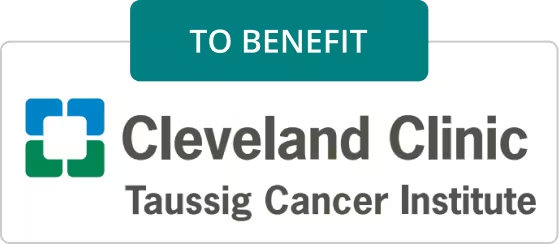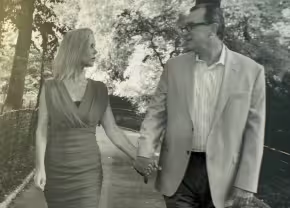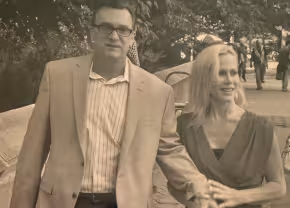amy’s story
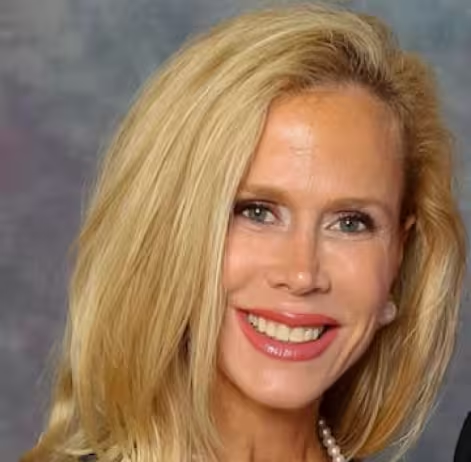
The Beginning (Part 1)
On July 13, 1964, the world welcomed Amy Louise Daniels, a remarkable person who was born with the BRCA-1 gene, which causes carriers to have a significant risk of developing ovarian and breast cancer. From the beginning, she faced a daunting destiny linked to this gene.
During the time that I knew her, Amy often questioned why she had to bear such a burden. My response was always the same: to help save lives. I would tell her what I believe to be true: “GOD chose you because he knew you would be the right person to handle this knowledge and to use it to help others around you.”
Growing up in a large family of nine siblings, Amy was the first of her generation to face this challenge, although she will not be the last. Some of her siblings have yet to be tested for the gene, although others have tested positive. Amy’s gift to her family is that they now have the knowledge to safeguard their own health and that of their children.
Those who knew Amy were always struck by her warmth and generosity. She was genuinely interested in others, never seeking the spotlight for herself. A friend once told me after meeting Amy that while she was undeniably attractive, she was also remarkably easy to talk to—a rare quality in someone so striking. Her inner beauty always shone through, which is why I believe God chose her to bear the weight of this devastating disease. She possessed the strength and grace needed to illuminate the reality of the BRCA-1 gene, and perhaps inspire efforts to one day cure it or develop preventive testing.
This foundation is Amy’s legacy. This website is dedicated to sharing Amy’s story—the fight for survival and the enduring spirit that continues to help others avoid the suffering she endured. As her loving husband, who was by her side most every minute of the journey, I will try to put her story in words as I saw it. My hope is that it will prevent many others from enduring the devastation that this terrible condition can cause. She didn’t know this foundation was my plan when she was mortal, but I know she is proud of me now. I am working hard to keep her spirit alive. I owe thanks to so many people who have helped me to achieve this goal, since a woman like Amy should never be forgotten.
The Diagnosis (Part 2)
We first learned of Amy’s ovarian cancer the evening after she had undergone a total hysterectomy. Dr. Todd Rumsey made a house call to deliver the heartbreaking news. He offered the hope that we might have been fortunate to catch the cancer in its early stages. When I inquired about the severity of the disease if we hadn’t caught it early, his response was chilling: “It’s very ugly.”
That night, as Amy rested from her surgery, I lay awake, grappling with the gravity of her condition. I began researching ovarian cancer and was confronted with the harsh reality: if the disease was in stage 3 or 4, she had only a 30 percent chance of surviving five years.
Soon, I learned the heartbreaking reality. Staging surgery to evaluate the cancer, performed at the Cleveland Clinic, confirmed that her case was stage 3C. Dr. Robert Debernardo, who we found after an extensive search for the best doctor in this genre, performed her surgery, and would end up being a caring friend to Amy for the rest of her life.
Amy and I gave credit to Dr. D and his staff for extending her life. Despite the diagnosis of stage 3C, Amy defied the odds and lived for ten years. While much of the credit goes to Dr D and his staff, most of her strength, I believe, came from Amy’s own personality and her close relationship with her GOD.
Surviving cancer was far from easy. It involved countless surgeries, chemotherapy, and the gradual breakdown of her body due to treatment. Despite the hardships and moments of hopelessness, Amy never succumbed to bitterness. Her relationship with God remained unshaken, even as she questioned why she had been chosen for such a path. On January 6, 2024, the disease finally overwhelmed her lungs, and she peacefully fell into God’s embrace.
BRCA1 Defined (Part 3)
The BRCA1 gene, located on chromosome 17 in humans, encodes a protein that plays a key role in tumor suppression and genomic stability. Discovered in 1994, BRCA1 (Breast Cancer 1, Early Onset) encodes a protein that is involved in the repair of DNA breaks through a process called homologous recombination. This gene repair normally helps prevent the accumulation of mutations that could lead to cancer.
However, when an individual inherits a mutated BRCA1 gene, the ability to repair DNA may be severely impaired. This can lead to an increased risk of developing breast and ovarian cancers. Individuals with inherited mutations in BRCA1 have a significantly higher risk of these cancers compared to the general population. Studies have shown that women with BRCA1 mutations have up to a 72 percent lifetime risk of developing breast cancer, compared to 13 percent in the general population, and a 44 percent lifetime risk of developing ovarian cancer, compared to 1.37 percent among most women.
A single copy of the mutated gene, inherited from either parent, can increase the risk of cancer in an individual. Consequently, each child of a parent with a BRCA1 mutation has a 50% chance of inheriting the mutation and the associated increased risk of cancer.
Testing for BRCA1 mutations is available, and may be a critical tool for assessing an individual’s risk, especially if there is a family history of breast or ovarian cancer. If a BRCA1 mutation is identified, it can guide preventive measures such as increased surveillance, prophylactic (preventive) surgeries, and personalized treatment strategies. For instance, individuals with BRCA1 mutations might be advised to begin mammograms and MRI scans at an earlier age than the general population and to consider options for preventive surgeries.
The BRCA1 gene’s discovery has had profound implications for understanding cancer genetics and personalized medicine. It has underscored the importance of genetic testing and counseling, not only for identifying individuals at high risk of cancer but also for guiding clinical decision-making. It has also influenced the development of targeted therapies. For example, PARP inhibitors, a class of drugs that target cancer cells with defective DNA repair mechanisms, have been shown to be effective in treating cancers associated with BRCA1 mutations.
Beyond breast and ovarian cancers, BRCA1 mutations have also been linked to increased risks of other cancers, including prostate cancer and pancreatic cancer, though these associations are less well-defined compared to breast and ovarian cancers.
The ongoing study of BRCA1 and related genes highlights the importance of genetic research in providing insights into cancer mechanisms and developing more effective and targeted treatments.
From Love Affair to Tragedy (Part 4)
Match.com and Our First Date
I met AmyLouDucks on Match.com in 2010. After months of searching for my soulmate, I was nearly ready to give up. Despite my persistent messages, AmyLouDucks never responded. However, one night while I was at a card game, she sent me a wink. I excitedly told my friends that I’d finally connected with the woman of my dreams. They thought I was a bit off, and maybe I was. From that moment on, my sole aim was to marry her.
After several attempts, I finally persuaded Amy to have dinner with me. She had avoided me on multiple occasions, but I insisted she meet me downtown at the Oceanaire in Indianapolis on a specific night. She agreed, and from that day forward, I was certain that Ron and Amy would one day be married.
We dated for nine months, and I fell deeply in love with Amy from the very start. After our first date, I decided to do everything possible to either marry her or die trying. By then, Amy was also in love, and marriage seemed like the next logical step for us. I decided to be completely honest about myself, including the potential risks of my business ventures. I told her that despite the appearance of success, there was a risk of bankruptcy. Her response was, “Ron, if you have to ask that question, you clearly don’t know me. I love you for who you are.” The next day, I bought the ring.
Amy Louise Daniels and Ronald William Martin Jr. were married in Central Park, New York, on August 23, 2011. The ceremony was intimate, with only the two of us, Veronica the officiant, and Pedro the photographer. After the brief ceremony, we walked around the park and posed for photos. Many people in the park must have wondered how I ended up with such a stunning woman. I was simply overjoyed to be 52 years old and ready to take on the world with this incredible woman by my side. She was truly my perfect match, with an inner beauty and a larger-than-life attitude.
Amy had a unique ability to make people feel important, and while many men were drawn to her, I never worried because I knew her loyalty was unwavering. Her strength was remarkable, which likely helped her fight ovarian cancer. I believe she fought not only for herself but also for the fabulous four.

The Fab Four–Amy and Her Girls (Part 5)
Amy, Alex, Gabby, and Grace . We are and always will be The Fab Four. Little did we know what started off as a simple re-naming of an iPhone text thread would give a title to something so much bigger. Amy was anything but ordinary, and her relationship with us was truly extraordinary. The Fab Four was forged out of love, laughter, adversity, and some sorrow, but it became something that is integral to who all of us are today.
When you ask each of us what The Fab Four means, you get a slightly different answer. It is a team; an unstoppable force; an unbreakable bond. We are a united front against life’s challenges and a cohort embracing life’s joys. It is doing and enjoying everyday life together. It was running errands that always mysteriously piled up. It was Starbucks runs, “getting breakfast for Ron,” going on walks, or driving around–and sometimes breaking and entering newly built houses! While some holidays were spent in the hospital, we were all together. Anything hard, we did it as one—always.
Our mother was and still is our center. She was our guiding light, and inspires us to face life’s challenges with courage, tenacity, strength, and a whole lot of grit. Not even death will come between The Fab Four.
We’re not sure how to describe very well what is in our hearts and what we lived—it will forever in part be our little secret. But we do want to leave you with some parting advice—the next time you are running to Target, or the mall, or cooking with your loved one, cherish the moment. Take a pause. And live in that moment. Because we promise you it is the everyday that is sacred.
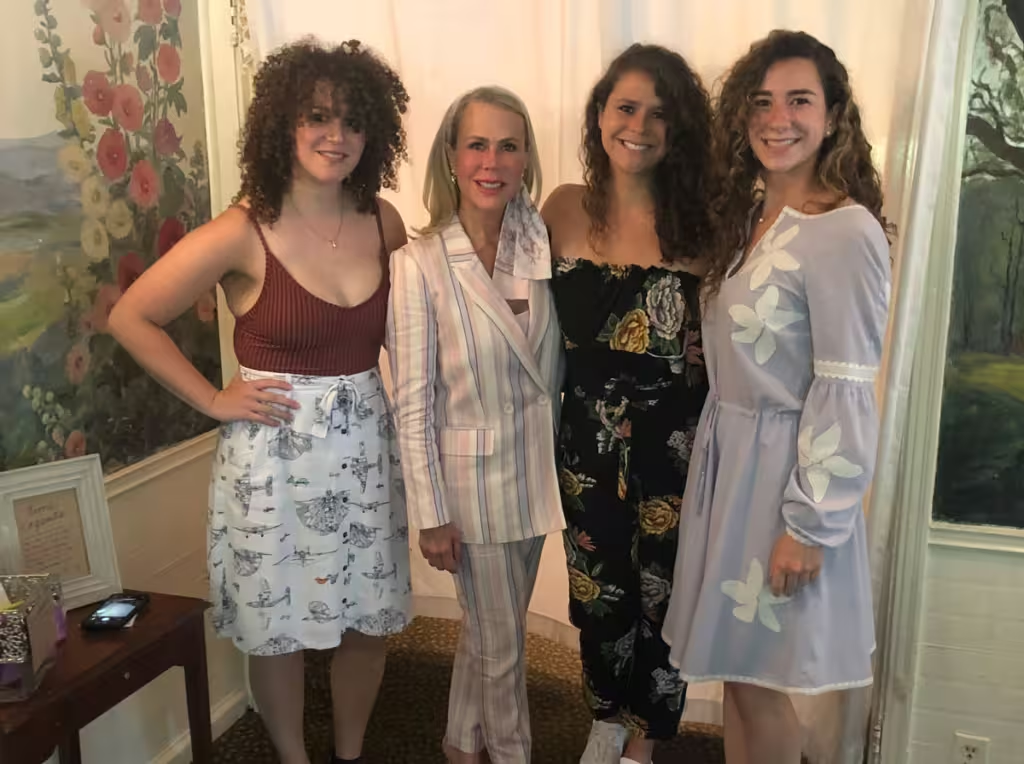
Amy’s Fight for Life (Part 6)
Amy taught me many profound lessons, with perhaps the most important being the incredible strength of the human spirit. Many people say, “I’m ready to go when God comes for me,” but reality often reveals a different truth. When faced with a terminal illness, most people will fight fiercely for their lives.
Through Amy’s battle with ovarian cancer, I experienced firsthand how the struggle with such a severe disease is always at the forefront of one’s mind. You really can’t go a day without thinking about it; sometimes you cannot even go an hour. The intensity of suffering and pain can be immense, and it’s hard to fully understand unless you witness it. Amy faced her pain and suffering with incredible grace, enduring treatments, surgeries, and the gradual breakdown of her body with little complaint and no bitterness. By watching my wife live with this reality, it underscored for me the urgent need for early detection of ovarian cancer. Once it arrives, it rarely leaves completely, and its consequences are far-reaching.
I’ve often repeated an important point over the past decade: many people express profound distress seeing their loved ones suffer. While participating in the fight is undeniably difficult, I always maintained, “I have the easy part.” Believing this to my core allowed me to objectively support Amy in her fight for survival.
Amy’s journey spanned ten years and involved relentless chemotherapy, 14 surgeries, and bouts of radiation. When she was diagnosed with ovarian cancer, she had a 30 percent chance of living five years. I believe the only reason she lived as long as she did was because she was so spectacular. Yes, GOD gets credit and so do the doctors, but Amy was the one that never gave up the will to live.
It began with a staging surgery by Dr. Robert Debernardo of the Cleveland Clinic, which resulted in a stage 3C diagnosis. Amy had immense trust and love for Dr. Debernardo, who consistently assured her that he and his team would do everything possible. His optimism was crucial for her battle, as positivity is essential for maintaining hope.
After the surgery, chemotherapy commenced and, although there were brief periods without treatment, the cancer recurred and never truly went away. Ovarian cancer is notorious for evading complete eradication as it adapts over time. The initial chemotherapy regimen included intraperitoneal Taxol and Cisplatin, a highly aggressive treatment. I recall the long drive from Cleveland that we later made many times. Amy, upon getting out of the car, nearly collapsed from the pain. This marked the intensification of her fight. That night, I found her in acute pain, which we initially thought was a reaction to the chemotherapy, but turned out to be a bowel obstruction, leading to an emergency ambulance ride back to Cleveland.
It is important to understand Amy’s story and the need for research. One way to do this is to outline the medications she endured and their side effects. Despite her exceptional strength, the human body struggles to withstand these medications’ negative impacts.
List of Medications and Side Effects:
Over the decade, Amy was treated with several drugs:
- Taxol (paclitaxel)
- Carboplatin
- Cisplatin
- Zejula (niraparib)
- Gemzar (gemcitabine)
- Avastin (bevacizumab)
- Doxil (doxorubicin HCl liposome injection)
- Cyclophosphamide
- Pembrolizumab
- Mirvetuximab
These medications were often used in various combinations and shared several common negative effects:
- Nausea and Vomiting: Many treatments lead to gastrointestinal issues.
- Fatigue: Persistent tiredness or weakness is prevalent.
- Bone Marrow Suppression: This can cause anemia, increased risk of infections, and bleeding problems.
- Hair Loss: A common side effect.
- Mouth Sores: Some treatments cause sores or inflammation in the mouth.
- Loss of Appetite: Contributing to weight loss and nutritional challenges.
Additionally, one or more of these treatments can cause:
- Neuropathy
- Allergic reactions
- Gastrointestinal issues
- Muscle and joint pain
- Heart issues
- Liver toxicity
- Risk of infection
- Kidney toxicity
- Hearing loss
- Anemia
- Diarrhea
- Constipation
- Headache
- Elevated liver enzymes
- Risk of blood clots
- Fever
- Rash
- Fluid retention
- Risk of bleeding
- Proteinuria
- Wound healing complications
- Hand-foot syndrome
- Low blood cell counts
- Bladder irritation
- Risk of secondary cancers
- Pneumonitis
- Hepatitis
- Endocrine disorders
- Infusion reactions
The End of Amy's Pain (Part 7)
In August 2022, Amy’s pain reached an unbearable level, leading us to make a heartbreaking decision. For approximately six months, she had been suffering from severe abdominal pain, with no clear diagnosis. Despite ongoing cancer treatment, the source of her pain remained elusive. While everyone suspected it was related to cancer, no one could be certain. The agony was constant and intense, and I felt helpless as I watched her suffer, often moaning in her sleep. Although Amy had endured pain throughout her eight-year battle, this was unlike anything we had experienced before. I found myself wishing, with a heavy heart, for her suffering to end, even hoping that God would take her away to relieve her pain.
I decided to take her to the emergency room at Fort Wayne Hospital, where despite administering high doses of opioids, her pain persisted. Her three daughters were with us, and they all stayed at the hospital while she was admitted. Grace, her youngest daughter and a nurse in the oncology department at UC Health Colorado, suggested that we move to Denver for specialized care. She was instrumental in connecting us with the appropriate resources.
Two weeks later, Amy, her dog Ripley, and I set out on an 1,800-mile journey to Denver. We stayed in a hotel for 18 days before moving into a furnished one-bedroom apartment for three months. Later, a couple we had met offered us their home to rent for four months while they traveled. We eventually found a permanent rental in the same Cherry Creek neighborhood. Amy loved to walk her dog in this neighborhood,and I wanted whatever Amy wanted. Although we were constantly on the move, our goal was to ensure Amy received the best possible care at UC Health Colorado.
Dr. Bradley Corr at UC Health took on the challenging task of diagnosing and managing Amy’s pain, which was complicated by her terminal cancer. He thoroughly reviewed her medical records and devised a treatment plan. Dr. Jonathan Treem, specializing in pain management, found a combination of medications that alleviated Amy’s pain, though it left her sedated throughout the day—a situation she found unacceptable. Determined to regain some quality of life, Amy gradually reduced her opioid dosage, enduring some pain in the process, with the hope of eventually eliminating all opioids despite the cancer’s progression.
Dr. Corr also recommended that Amy see a urologist about a kidney stent she had from a previous procedure in Fort Wayne. The new urologist discovered that the stents typically need examination and replacement every six months. Contrary to the Fort Wayne doctor’s advice that replacement was only necessary if issues arose, the new urologist suggested removing the stent for a week to determine if it was contributing to her pain. Remarkably, once the stent was removed, Amy’s pain vanished that very night. The stent was never reinserted.
Amy, the most beautiful, humble, and wonderful person I have ever known, passed away peacefully on January 6, 2024. Amy Louise Martin, my beloved wife, was finally free from pain.
